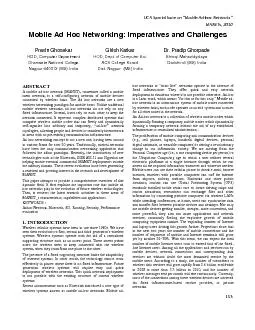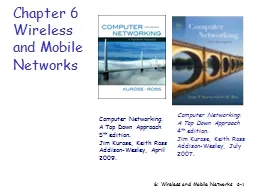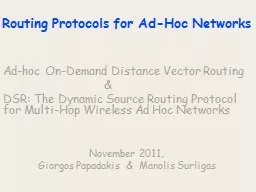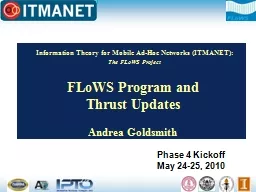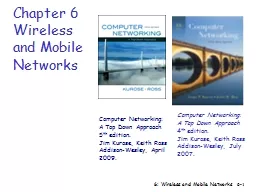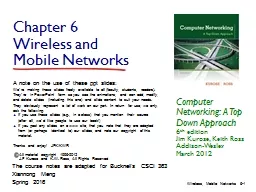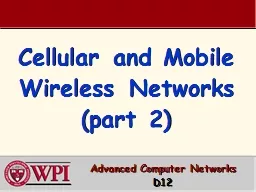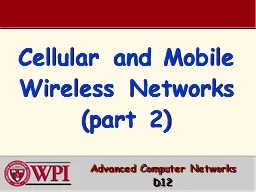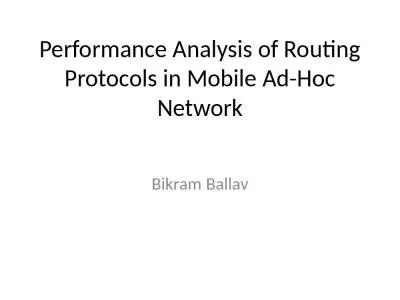PPT-Mobile IP for Mobile Ad hoc Networks
Author : emily | Published Date : 2021-01-28
GROUP 9 Sridivya Rapuru Sravani Singirikonda Vikram Siripuram Rishi Remesh Ranjini Ad Hoc Network Reactive On Demand Network Does not require a central base station
Presentation Embed Code
Download Presentation
Download Presentation The PPT/PDF document "Mobile IP for Mobile Ad hoc Networks" is the property of its rightful owner. Permission is granted to download and print the materials on this website for personal, non-commercial use only, and to display it on your personal computer provided you do not modify the materials and that you retain all copyright notices contained in the materials. By downloading content from our website, you accept the terms of this agreement.
Mobile IP for Mobile Ad hoc Networks: Transcript
Download Rules Of Document
"Mobile IP for Mobile Ad hoc Networks"The content belongs to its owner. You may download and print it for personal use, without modification, and keep all copyright notices. By downloading, you agree to these terms.
Related Documents


